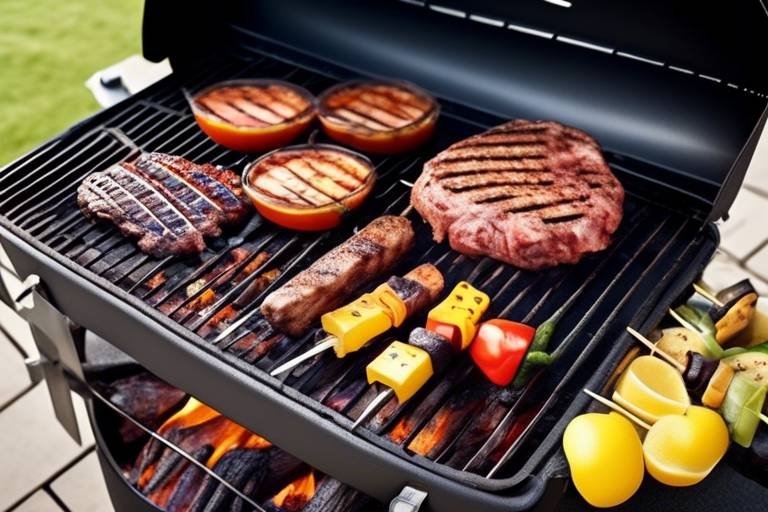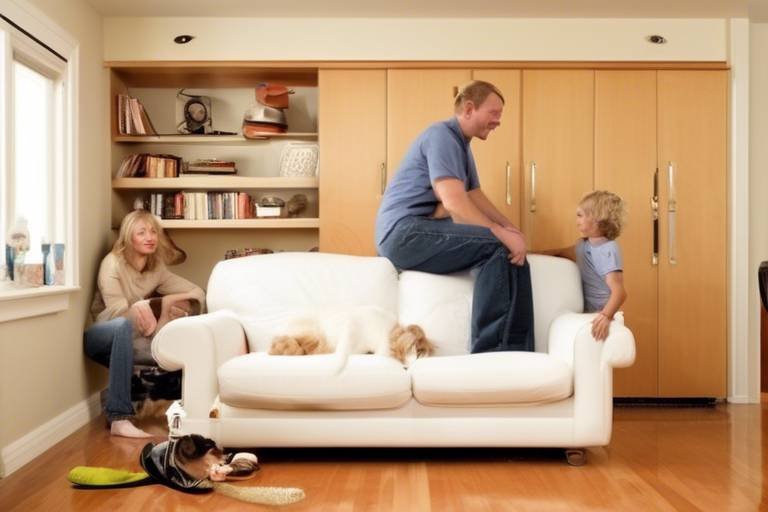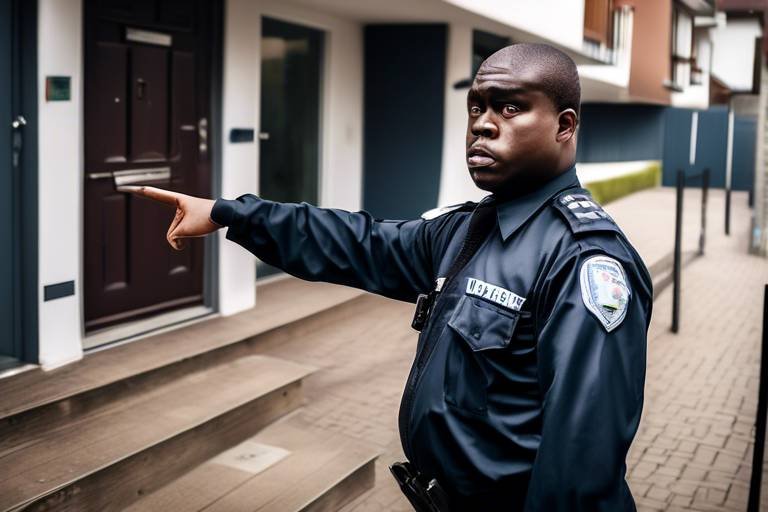Erecting Safe Tree Houses - Things to Remember
Building a tree house is like crafting a childhood dream into reality. It’s a magical space where kids can unleash their imagination, play games, and enjoy the great outdoors. However, **safety** should always be your top priority when embarking on this exciting project. In this article, we will explore essential considerations for erecting safe tree houses, focusing on design, materials, safety measures, and maintenance. By following these guidelines, you can ensure a fun and secure environment for children while they enjoy their elevated hideaway.
Firstly, selecting a healthy and sturdy tree is crucial for safety. Imagine the tree as the backbone of your tree house; if it’s weak, the whole structure can be compromised. Factors such as tree species, age, and condition greatly influence the tree house's stability and longevity. For instance, hardwoods like oak and maple are excellent choices due to their strength and durability, while softer woods may not provide the necessary support. Always inspect the tree for signs of disease or decay, as these can weaken its structure and pose risks to your tree house.
Next, effective design incorporates safety features, accessibility, and child-friendly elements. Think of the design as the blueprint of a fortress; it needs to be both functional and aesthetically pleasing. It’s essential to balance these aspects in the design process. For example, consider how the tree house will fit into the surrounding environment and how children will access it safely. You wouldn’t want to create a masterpiece that’s difficult to reach or unsafe to play in!
Determining the optimal height is vital to ensure safety while allowing easy access. Too high, and you risk falls; too low, and it might not feel like a true tree house. A height of 6 to 8 feet is often ideal for young children. When planning access, consider using ladders or stairs that are secure and easy for children to navigate. Safety is paramount, so make sure any access points are well-constructed and sturdy.
Incorporating safety railings is vital for preventing falls. Think of railings as the guardians of your tree house; they provide a protective barrier that keeps children safe. Choose appropriate materials and heights to ensure maximum protection for children playing in the tree house. A good rule of thumb is to have railings at least 36 inches high, which can help prevent accidental tumbles.
Proper weight distribution is essential to prevent structural failure. Just like a seesaw, if one side is too heavy, it can tip over. Ensure the design accounts for the weight of occupants and any additional features like furniture. This means considering the materials used and how they will be arranged within the tree house. A well-balanced structure will not only be safer but also more enjoyable for kids to play in.
Choosing the right materials affects durability and safety. You wouldn’t want to build a house out of flimsy materials, right? Opt for weather-resistant and non-toxic materials to ensure the tree house can withstand outdoor conditions. Pressure-treated wood, for example, can resist rot and insects, making it a great choice for construction. Always check that the materials are safe for children, as the last thing you want is harmful chemicals lurking in their play space.
Employing correct building techniques is essential for structural integrity. Understanding basic construction principles helps in creating a safe and stable tree house. It’s like assembling a puzzle; each piece needs to fit together perfectly to create a strong and reliable structure. Make sure you’re familiar with the best practices in tree house construction, as this knowledge will guide you in the right direction.
Using appropriate fastening methods increases the tree house's stability. Consider screws, bolts, and brackets designed for outdoor use to enhance safety. Just like securing a lid on a jar, the right fasteners will keep everything tightly in place. Avoid using nails alone, as they can work loose over time, leading to potential hazards.
A solid foundation and support system are critical. Think of the foundation as the roots of a tree; it needs to be strong to support everything above it. Ensure the tree house is anchored securely to the tree to withstand wind and movement. The last thing you want is for your child’s castle in the sky to come crashing down!
Lastly, routine inspections and maintenance are vital for safety. Just like you wouldn’t ignore a check engine light in your car, don’t overlook the condition of your tree house. Regularly checking for wear and tear helps in identifying potential hazards before they become serious issues. This includes looking for loose boards, rusted fasteners, or signs of rot. By keeping a watchful eye, you can ensure that the tree house remains a safe haven for your children.
- What is the best type of tree for a tree house? Hardwoods like oak and maple are ideal due to their strength and durability.
- How high should a tree house be? A height of 6 to 8 feet is generally safe for young children.
- What materials should I avoid? Avoid materials that are not weather-resistant or contain harmful chemicals.
- How often should I inspect the tree house? Regular inspections every few months are recommended to catch any potential issues early.
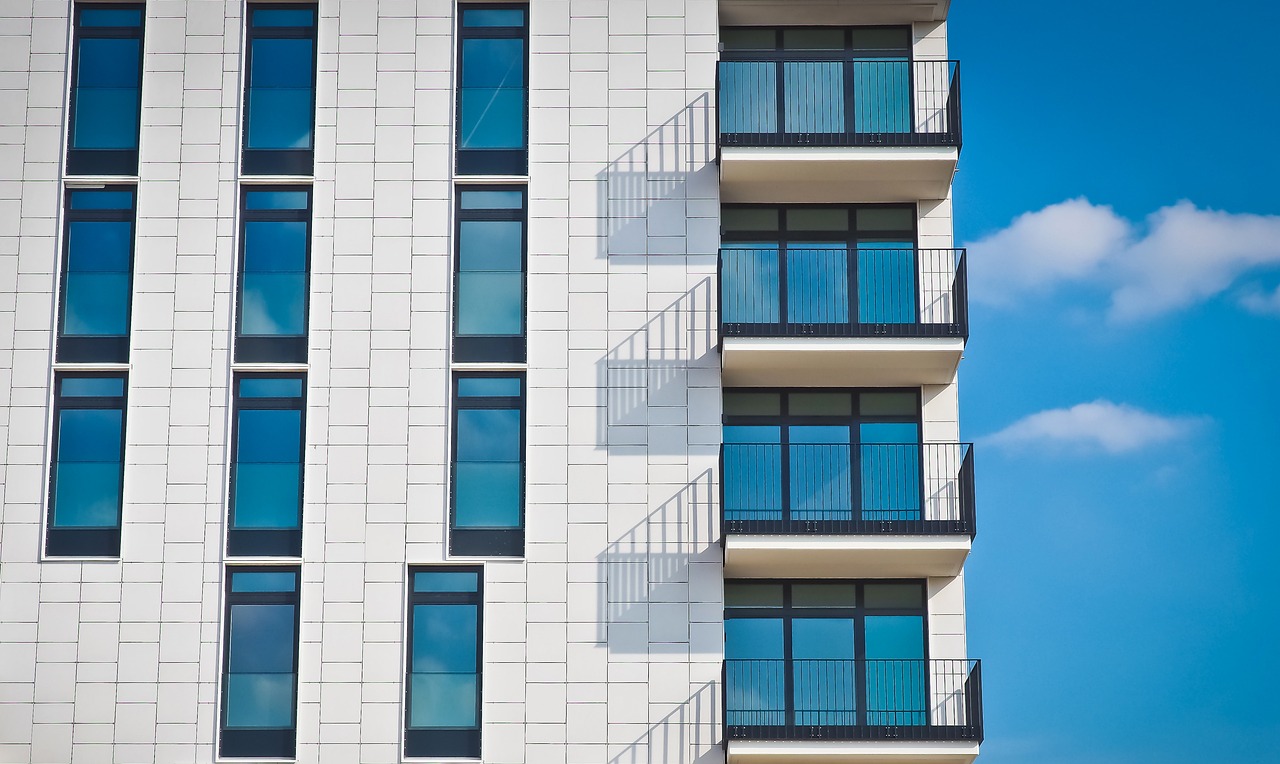
Choosing the Right Tree
This article explores essential considerations for building safe tree houses, focusing on design, materials, safety measures, and maintenance to ensure a fun and secure environment for children.
When it comes to building a tree house, the first and most crucial step is . It’s not just about picking any tree in your backyard; it’s about selecting a tree that will provide a safe, sturdy foundation for years of fun. A healthy tree is like a strong backbone for your tree house, supporting all the laughter and adventures that will take place within its branches.
There are several factors to consider when selecting the perfect tree:
- Tree Species: Some tree species are more suitable for tree houses than others. For example, oak, maple, and fir trees are often recommended due to their robust structure and longevity. Avoid trees with weak wood, like willows or soft pines.
- Age: An older tree is generally more stable than a younger one, but it’s essential to ensure that it’s healthy. Look for signs of decay or disease, as these can compromise the tree’s integrity.
- Condition: Check for any visible damage, such as broken branches or signs of rot. A tree that appears healthy and strong will make a much safer base for your tree house.
Additionally, consider the location of the tree. Is it in a safe area away from power lines or other hazards? Is it easily accessible for construction and maintenance? These are vital questions to ask as you weigh your options. Remember, the tree you choose will not only bear the weight of the tree house but also the laughter and joy of your children.
Furthermore, the height of the tree plays a significant role in your decision. While a higher tree might seem exciting, it’s essential to balance thrill with safety. A tree that is too high can pose risks, especially for younger children. A height of around 6 to 10 feet is often ideal for younger kids, while older children might enjoy something a bit higher. Just ensure that you incorporate proper safety measures, such as railings and secure access points.
In summary, when , take your time to evaluate all these factors. A well-chosen tree will not only enhance the safety of your tree house but also create a magical space where memories are made. With the right tree, you’re setting the stage for countless adventures and a lifetime of fun!
Q: What is the best type of tree for building a tree house?
A: Trees like oak, maple, and fir are ideal due to their strength and durability. Avoid weaker species like willows.
Q: How do I know if a tree is healthy enough for a tree house?
A: Look for signs of decay, broken branches, or disease. A healthy tree should have a strong trunk and vibrant leaves.
Q: Is there a recommended height for a tree house?
A: A height of 6 to 10 feet is generally safe for younger children, while older kids may enjoy higher structures, provided safety measures are in place.
Q: Can I build a tree house in any type of tree?
A: No, it’s essential to choose a strong, healthy tree. Some species are more suitable than others, so do your research before starting.
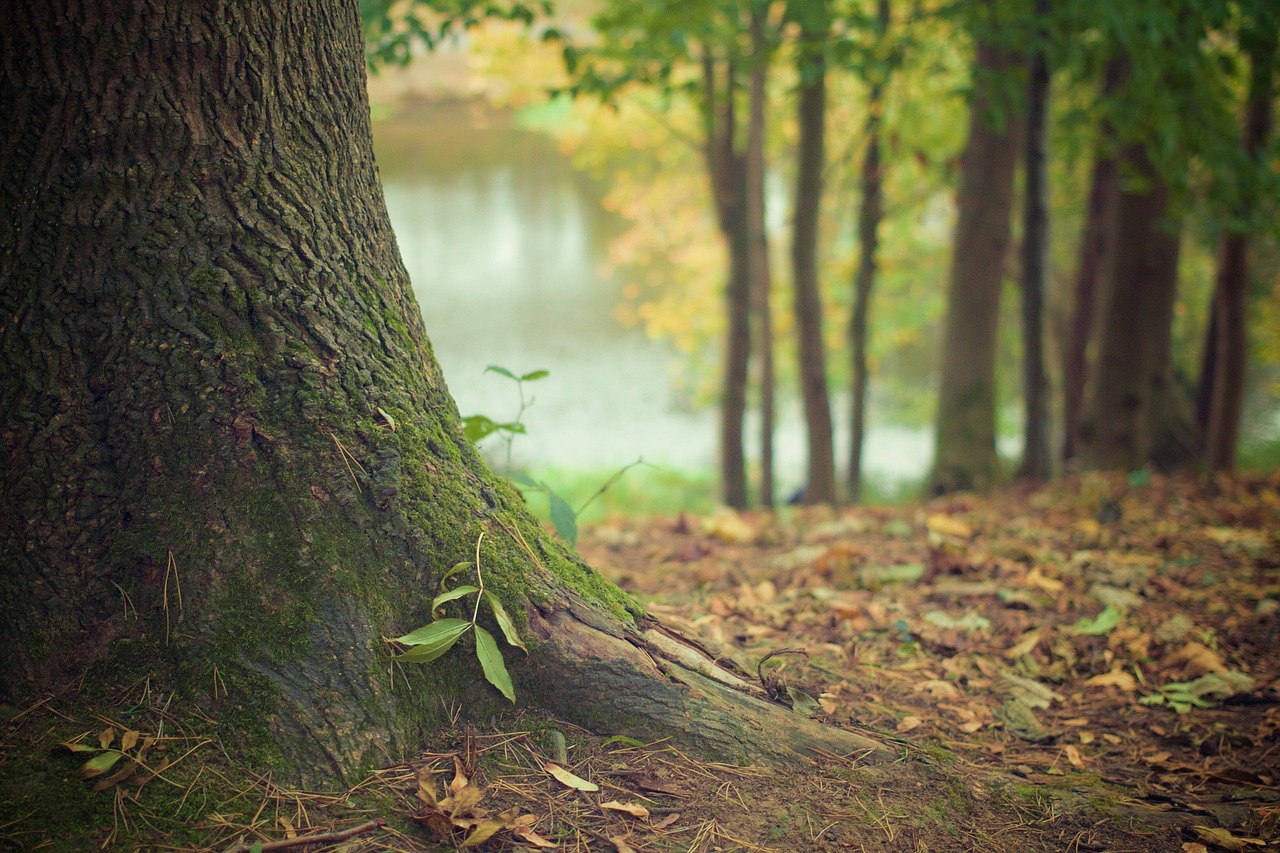
Design Considerations
When it comes to building a tree house, the design is not just about aesthetics; it’s about creating a safe and functional space for children to explore and enjoy. Imagine a magical hideaway nestled high among the branches, where imagination runs wild. But before you grab your hammer and nails, let’s dive into some critical elements that should be at the forefront of your design considerations.
First and foremost, it’s essential to incorporate child-friendly elements. Think about features that will enhance playtime, such as a small slide, a rope swing, or even a lookout point. However, while you’re adding these fun features, don’t forget that safety must always come first. For instance, the slide should be positioned at a safe angle, and the lookout point should have sturdy railings to ensure no one accidentally tumbles over the edge.
Another important aspect of design is accessibility. The tree house should be easy for children to enter, which means you’ll need to consider how they will get up there. A sturdy ladder or a set of stairs with a gentle incline can make all the difference. Make sure these access points are securely attached and can support the weight of excited little climbers. You wouldn’t want a thrilling ascent to turn into a risky adventure!
Determining the optimal height for your tree house is a balancing act. Too high, and it might become a safety hazard; too low, and it might lack the adventure that children crave. Ideally, the tree house should be elevated enough to provide a sense of adventure while still being low enough for easy access. A height of 6-10 feet is generally considered safe for most children, but always take the tree’s structure into account.
Speaking of safety, incorporating safety railings is non-negotiable. These railings should be installed around any platform or balcony area to prevent falls. When designing the railings, consider using materials like treated wood or metal that can withstand the elements. The height of the railings should be at least 36 inches, which is a standard safety measure for preventing accidental falls.
Now, let’s talk about weight distribution. This is a crucial factor that many people overlook. Imagine the disaster of a tree house collapsing because it wasn’t designed to hold the weight of its occupants! To prevent this, ensure that your design accounts for the weight of both the children and any additional features like furniture or toys. Consider using a triangular design for support beams, as triangles are known for their strength and stability.
In summary, the design of a tree house should be a perfect blend of fun and safety. By focusing on child-friendly elements, accessibility, height, safety railings, and proper weight distribution, you can create a magical space that children will cherish while ensuring their safety. Remember, a well-designed tree house is more than just a structure; it’s a gateway to adventure, imagination, and countless memories!
- What is the best type of tree for building a tree house? Look for sturdy, healthy trees such as oak, maple, or fir that have a thick trunk and strong branches.
- How high should a tree house be? A height of 6-10 feet is generally safe, but always consider the tree's structure and the children's age.
- What materials should I use for building? Opt for weather-resistant and non-toxic materials like treated wood, which can withstand outdoor conditions.
- How often should I maintain the tree house? Regular inspections every few months are recommended to check for wear and tear or any potential hazards.
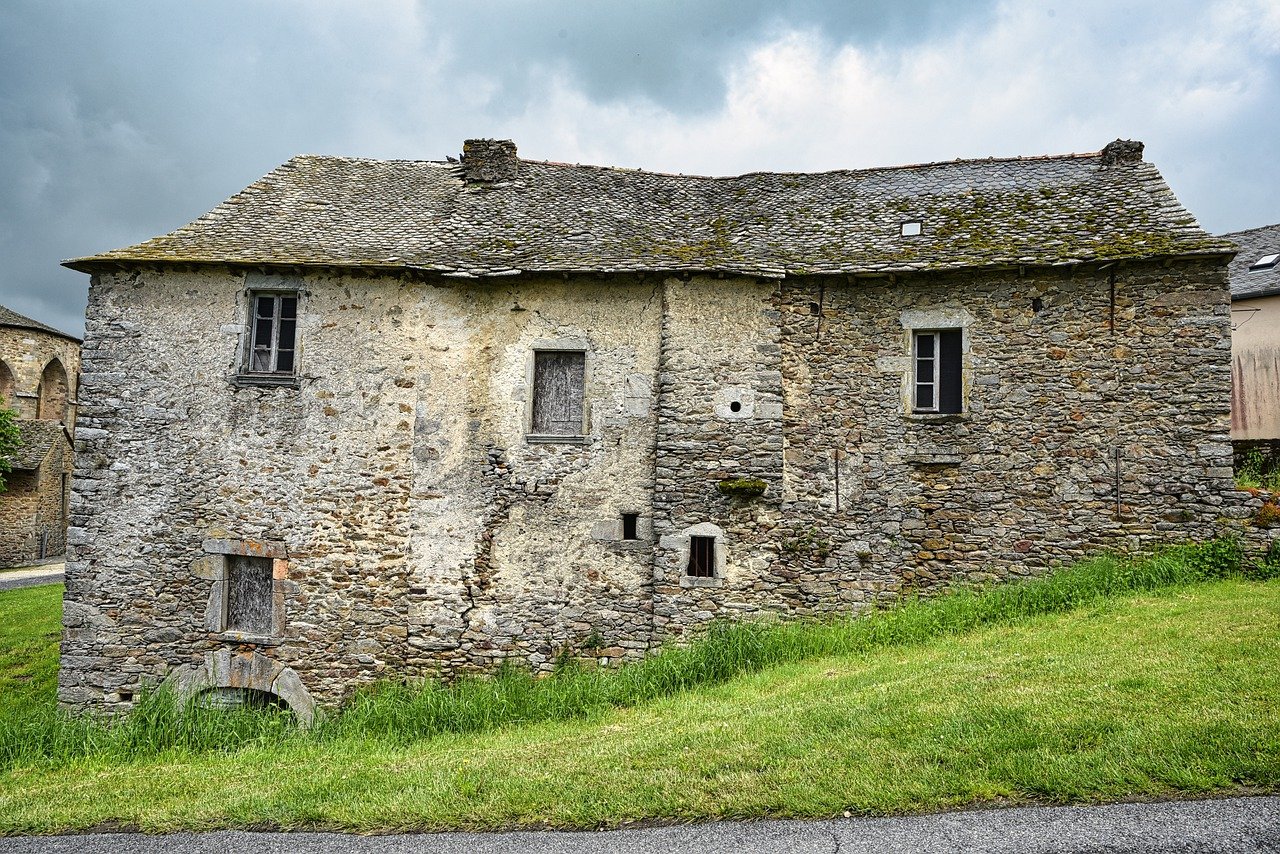
Height and Accessibility
When it comes to building a tree house, are two of the most important factors to consider. After all, you want your kids to enjoy their new fortress in the trees without putting their safety at risk. So, how do you find that perfect balance? First off, think about the optimal height. A tree house that's too high can be intimidating and dangerous, while one that's too low might not feel like an adventure at all. Aim for a height that allows for fun but keeps safety in mind—generally, a height of 6 to 8 feet is recommended for younger children. This height allows for a thrilling experience without the peril of a long drop.
Now, let's talk about accessibility. How are the little adventurers going to reach their lofty hideout? Consider incorporating secure ladders or stairs that are easy for children to navigate. A good rule of thumb is to ensure that any ladder or staircase has a non-slip surface and is sturdy enough to support the weight of multiple kids. You might want to add handrails for extra security, especially if the tree house is on the taller side. Remember, the easier it is for kids to get up and down, the more they’ll want to play!
In addition to ladders and stairs, think about creating a rope ladder or a climbing wall for an added element of fun. These features not only make the tree house more exciting but also help develop your child's motor skills and confidence. Just ensure that any climbing apparatus is securely fastened and made of durable materials. And, of course, always supervise younger children when they’re playing in their elevated retreat!
Lastly, consider the surrounding area when planning your tree house. Make sure there’s enough space around the tree for children to play safely. Clear away any sharp objects, branches, or other hazards that could pose a risk during playtime. It's all about creating a safe and welcoming environment where kids can let their imaginations run wild!
- What is the best type of tree for a tree house? A sturdy tree species like oak or maple is ideal due to their strong trunks and branches.
- How high should a tree house be? Generally, a height of 6 to 8 feet is recommended for safety and fun.
- What materials should I use for a tree house? Use weather-resistant and non-toxic materials to ensure durability and safety.
- Should I use a ladder or stairs? Both options can work, but ensure they are secure and easy for children to navigate.
- How often should I inspect the tree house? Regular inspections should be conducted at least once a month to check for wear and tear.
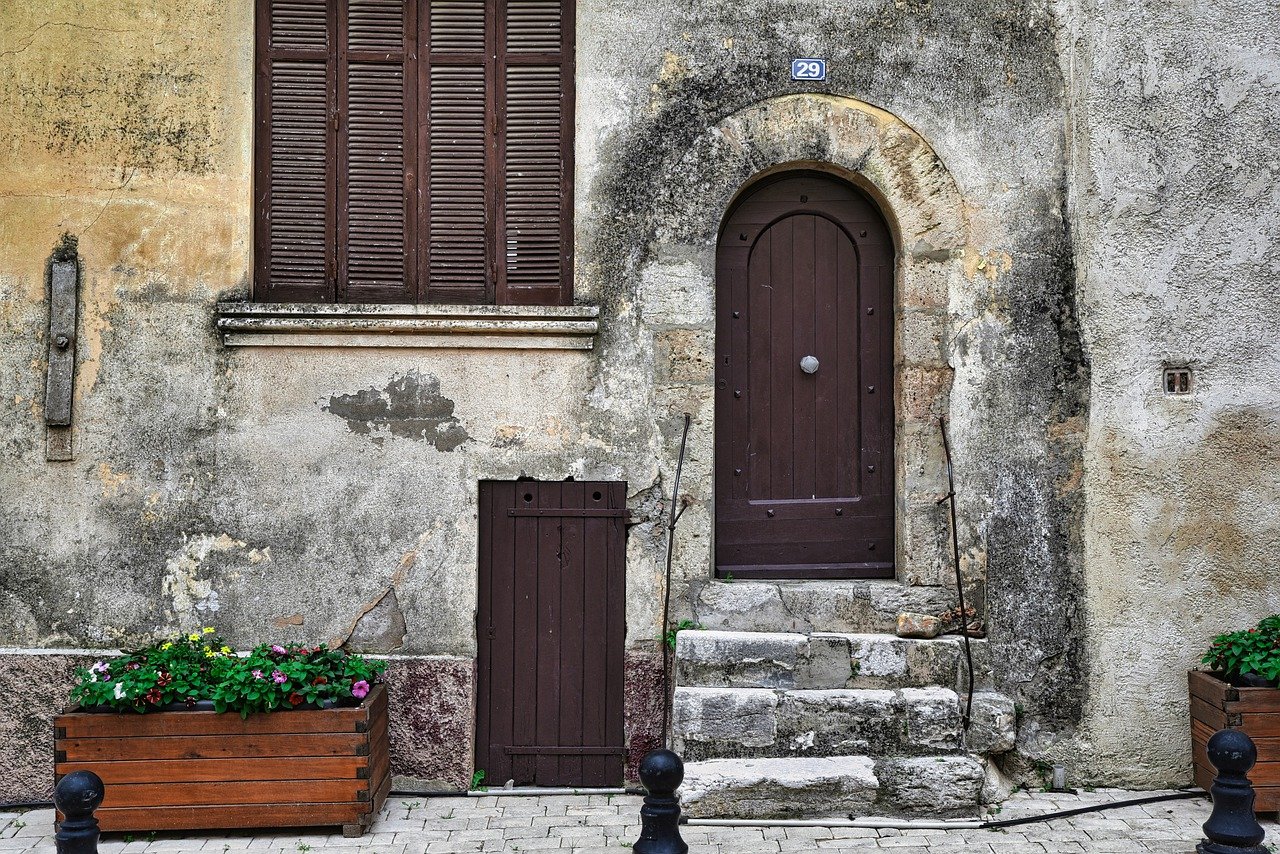
Safety Railings
When it comes to building a tree house, are not just an afterthought; they are a critical component that can mean the difference between fun and danger. Imagine your children playing in their elevated sanctuary, laughing and exploring, but then picture the heart-stopping moment when one of them slips. This is where well-designed safety railings come into play, acting as a protective barrier that keeps the little adventurers safe while they enjoy their high-flying escapades.
First and foremost, the height of the railings is crucial. Ideally, railings should be at least 36 inches high, providing a solid barrier against accidental falls. However, this height can vary depending on the overall height of the tree house and the age of the children using it. For younger kids, consider raising the railings a bit higher to offer extra protection. Additionally, the spacing between the vertical posts of the railing should be narrow enough to prevent a child from slipping through—generally no more than 4 inches apart. This is particularly important for smaller children who might be tempted to lean over the edge.
Now, let’s talk about materials. Safety railings should be constructed from durable, weather-resistant materials to ensure they can withstand the elements. Treated wood, composite materials, or even metal railings can be excellent choices, depending on your aesthetic preferences and budget. It's essential to avoid any materials that could splinter or become sharp over time, as this could pose additional risks. Regularly inspecting the railings for wear and tear is equally important; if you notice any signs of damage, it’s crucial to repair or replace the railings immediately to maintain a safe environment.
Moreover, consider adding some design features to enhance safety. For instance, you might want to incorporate a horizontal rail in addition to the vertical posts. This not only adds an extra layer of security but can also serve as a fun feature for kids to hold onto while they climb in and out of the tree house. Another option is to use netting or mesh between the posts, which can act as a safety net without obstructing the view, allowing kids to feel the thrill of being up high while remaining secure.
In conclusion, when designing your tree house, never underestimate the importance of . They are your first line of defense against accidents and should be crafted with care and attention to detail. By prioritizing height, spacing, material selection, and thoughtful design features, you can create a safe haven where your children can explore, imagine, and play to their heart's content without unnecessary worry.
- What materials are best for safety railings? Weather-resistant wood, composite materials, and metal are all excellent choices for durability and safety.
- How high should the railings be? A minimum height of 36 inches is recommended, but you may want to adjust this based on the tree house's height and the age of the children.
- How often should I inspect the railings? Regular inspections should be conducted at least twice a year, or more frequently if the tree house is used heavily.
- Can I add additional safety features to the railings? Yes! Consider adding horizontal rails or netting for extra security without compromising visibility.

Weight Distribution
When it comes to building a tree house, one of the most critical factors to consider is . Imagine a seesaw; if too much weight is on one side, it tips over, right? The same principle applies to tree houses. If the weight is not evenly distributed, it can lead to structural failure, which is the last thing you want for your kids' play area. To ensure safety, it's essential to think about how the weight of the tree house, its occupants, and any additional features like furniture are managed.
First off, you’ll want to calculate the total weight of everything that will be in and on the tree house. This includes:
- The weight of the structure itself
- Any additional items like furniture or toys
- The weight of children playing inside
Next, consider the placement of these elements. For instance, heavier items should be placed closer to the center of the tree house to maintain balance. Think of it like packing a suitcase; you wouldn't put all your shoes on one side because it would tip over. The same goes for your tree house. By distributing weight evenly, you create a more stable environment.
Additionally, the design of the tree house can greatly influence weight distribution. A well-designed tree house should have a solid foundation that supports the structure evenly. This might involve using cross-bracing techniques or additional support beams to help distribute weight across the tree's branches. Remember, the tree itself is alive and will sway with the wind, so your design must accommodate that natural movement.
Lastly, regular inspections are crucial. Over time, the weight distribution can shift due to wear and tear or changes in the tree's health. Make it a habit to check the stability of the structure, ensuring that everything is still in its rightful place. Just like you would check your car's tires for wear, keeping an eye on your tree house will help ensure a safe and fun environment for your children.
Q: How can I determine if my tree is suitable for a tree house?
A: Look for a healthy, sturdy tree with a thick trunk and strong branches. Ideally, the tree should be at least 8-10 inches in diameter and free of any disease or damage.
Q: What materials are best for building a tree house?
A: Weather-resistant and non-toxic materials are ideal. Pressure-treated wood, marine-grade plywood, and galvanized screws are great options for durability and safety.
Q: How often should I inspect the tree house?
A: It's recommended to inspect the tree house at least twice a year, checking for any signs of wear, loose fittings, or damage to the tree itself.
Q: Can I build a tree house in any tree?
A: Not all trees are suitable for tree houses. Avoid weak or decaying trees, and always consult with a professional if you’re unsure about the tree’s health.
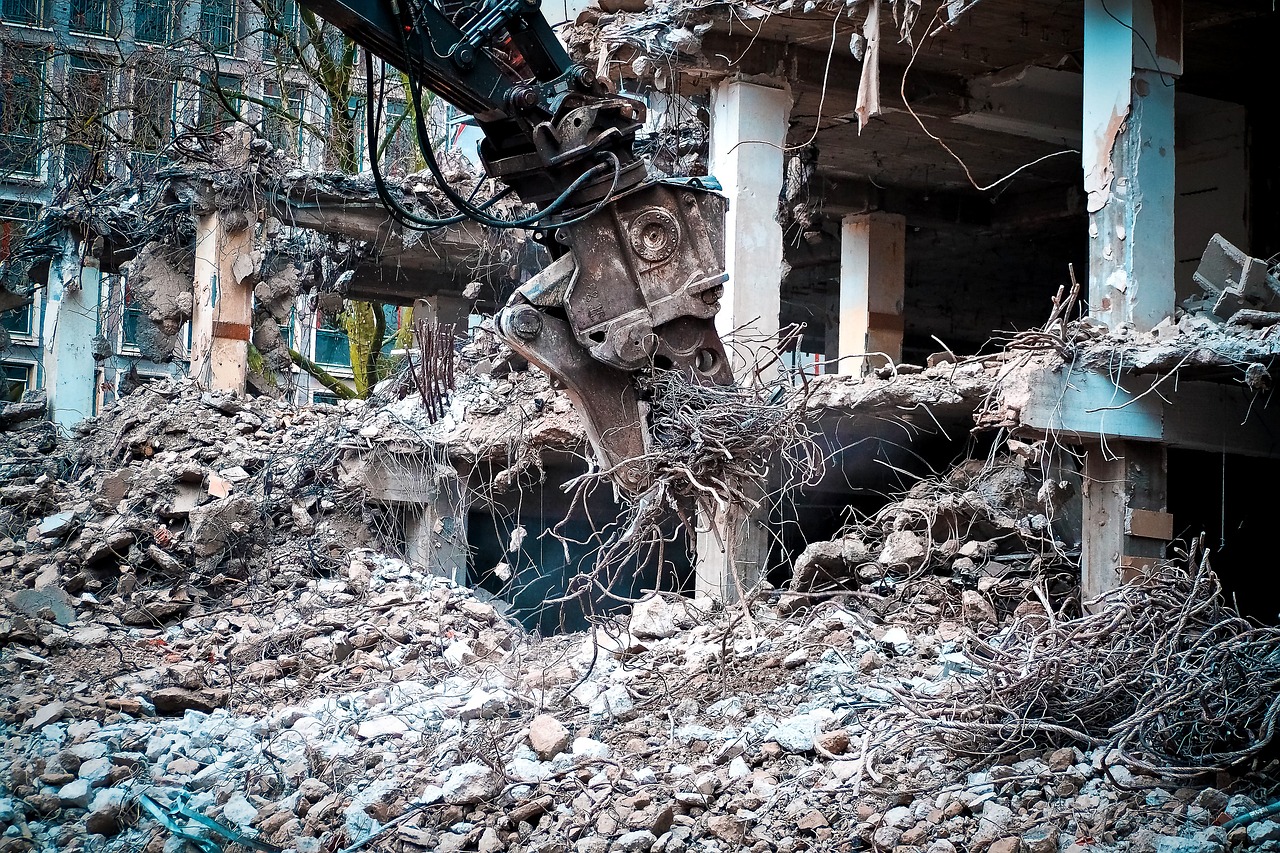
Materials Selection
This article explores essential considerations for building safe tree houses, focusing on design, materials, safety measures, and maintenance to ensure a fun and secure environment for children.
Selecting a healthy, sturdy tree is crucial for safety. Factors like tree species, age, and condition influence the tree house's stability and longevity.
Effective design incorporates safety features, accessibility, and child-friendly elements. It’s essential to balance aesthetics with functionality and security in the design process.
Determining the optimal height ensures safety while allowing easy access. Consider using ladders or stairs that are secure and easy for children to navigate.
Incorporating safety railings is vital for preventing falls. Choose appropriate materials and heights to ensure maximum protection for children playing in the tree house.
Proper weight distribution is essential to prevent structural failure. Ensure the design accounts for the weight of occupants and any additional features like furniture.
Choosing the right materials affects durability and safety. Opt for weather-resistant and non-toxic materials to ensure the tree house can withstand outdoor conditions. For instance, using pressure-treated wood helps prevent rot and insect damage, making it a popular choice. Additionally, consider materials that are easy to maintain and can endure the elements without compromising safety.
It’s also wise to avoid materials that can splinter or cause injury. For example, selecting smooth, rounded edges for any wooden components can significantly enhance safety for children. Furthermore, when it comes to roofing, materials like metal or durable plastic can provide better protection against weather elements compared to traditional shingles.
Here’s a quick comparison of some common materials:
| Material | Durability | Maintenance | Safety |
|---|---|---|---|
| Pressure-treated wood | High | Moderate | Good |
| Cedar wood | High | Low | Excellent |
| Composite materials | Very High | Very Low | Good |
| Metal roofing | Very High | Very Low | Good |
When selecting materials, always consider the local climate and the tree's specific characteristics. This ensures that your tree house remains safe and enjoyable for years to come, providing a magical retreat for children to explore and play.
Employing correct building techniques is essential for structural integrity. Understanding basic construction principles helps in creating a safe and stable tree house.
Using appropriate fastening methods increases the tree house's stability. Consider screws, bolts, and brackets designed for outdoor use to enhance safety.
A solid foundation and support system are critical. Ensure the tree house is anchored securely to the tree to withstand wind and movement.
Routine inspections and maintenance are vital for safety. Regularly checking for wear and tear helps in identifying potential hazards before they become serious issues.
- What type of tree is best for a tree house? - Look for sturdy hardwood trees like oak or maple that are healthy and mature.
- How high should a tree house be? - Aim for a height that is safe yet allows for a fun experience, typically around 6 to 10 feet off the ground.
- What materials should I avoid? - Avoid untreated wood and materials that can splinter or pose safety risks.
- How often should I inspect my tree house? - Regularly inspect your tree house at least once a season to ensure it remains safe.
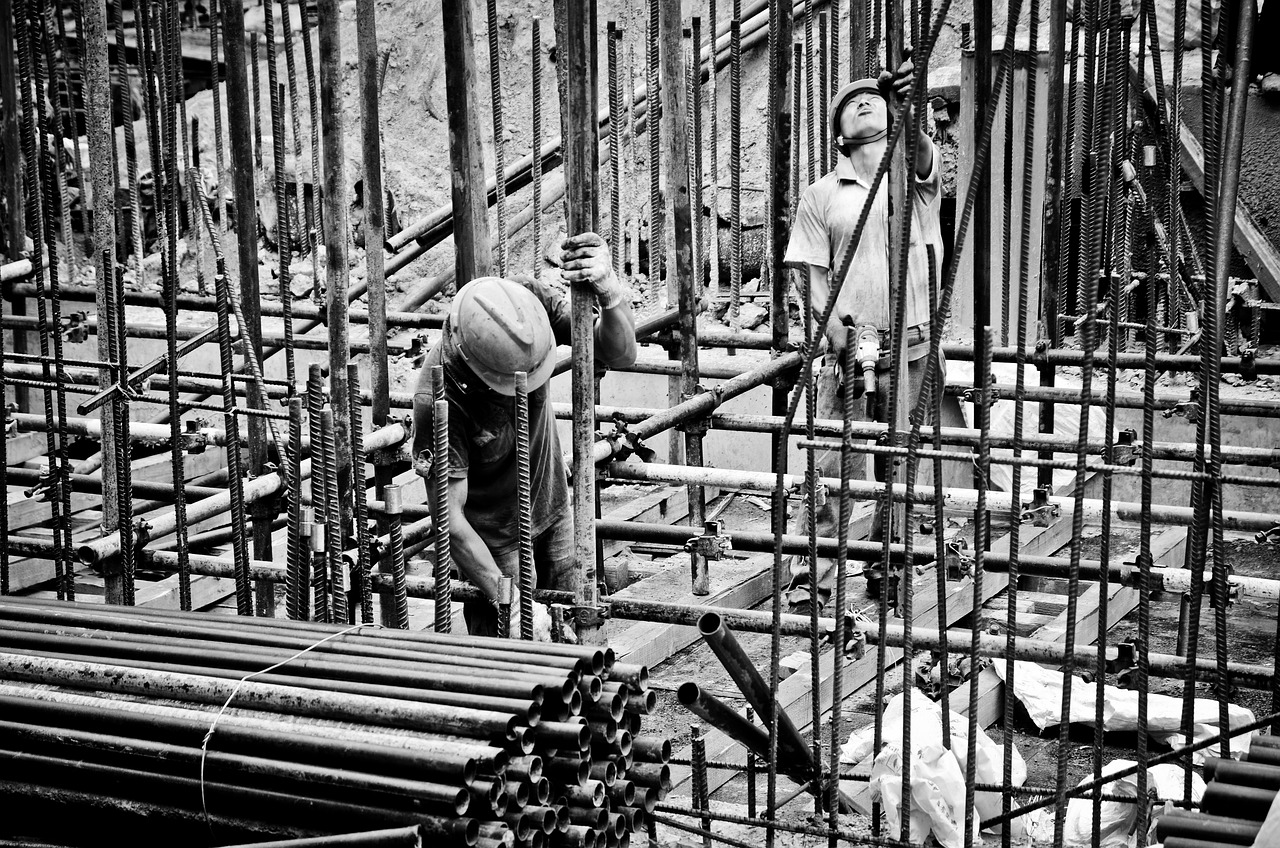
Building Techniques
When it comes to constructing a tree house, employing the right is essential for ensuring its structural integrity and safety. Think of it like building a house on the ground; you wouldn’t start without a solid foundation, right? The same principle applies here. The tree house must be securely anchored to the tree, which can sway and move with the wind. This requires a thoughtful approach to both the foundation and the support system.
One of the first things to consider is the type of fastening methods you will use. Just like a chef carefully selects their ingredients, you should choose fasteners that are specifically designed for outdoor use. Screws, bolts, and brackets made from rust-resistant materials can significantly enhance the stability of your tree house. Using the right fasteners not only ensures that the structure remains intact over time but also provides peace of mind that it can withstand the playful antics of children.
Additionally, the foundation of your tree house can be likened to the roots of a tree; it needs to be strong and well-anchored. This means that you should consider how the weight of the house will be distributed across the tree branches. A well-designed tree house will take into account the weight distribution to prevent any structural failures. It's vital to ensure that the tree can handle the load, which includes not just the weight of the house itself but also the kids, furniture, and any other items that will be added later. A good rule of thumb is to consult a tree expert or arborist to determine the best branches for support.
Furthermore, when constructing the tree house, you should keep in mind the importance of flexibility. Trees grow and change over time, and your design should accommodate this natural growth. This means avoiding overly rigid connections that could harm the tree or compromise safety. Instead, consider using flexible fasteners that allow for some movement while still ensuring stability.
Finally, don't forget about the safety features that can be integrated into your building techniques. For instance, adding safety railings and ensuring that all surfaces are smooth and free of splinters can create a safer play environment. Think of these elements as the finishing touches that complete your masterpiece. They not only enhance the tree house's aesthetic appeal but also ensure that it remains a safe haven for children.
In summary, the building techniques you choose are pivotal to the longevity and safety of your tree house. By selecting the right fastening methods, ensuring proper weight distribution, and incorporating flexibility into your design, you can create a secure and enjoyable retreat for children. Remember, a well-built tree house is not just a structure; it’s a gateway to adventure!
- What type of tree is best for building a tree house?
Healthy, sturdy trees like oak, maple, and fir are ideal because of their strength and durability. - How high should a tree house be?
The height should be determined based on safety and accessibility, typically between 6 to 10 feet off the ground. - What materials should I use?
Opt for weather-resistant and non-toxic materials to ensure safety and longevity. - How often should I maintain the tree house?
Regular inspections should be conducted at least twice a year to check for wear and tear.
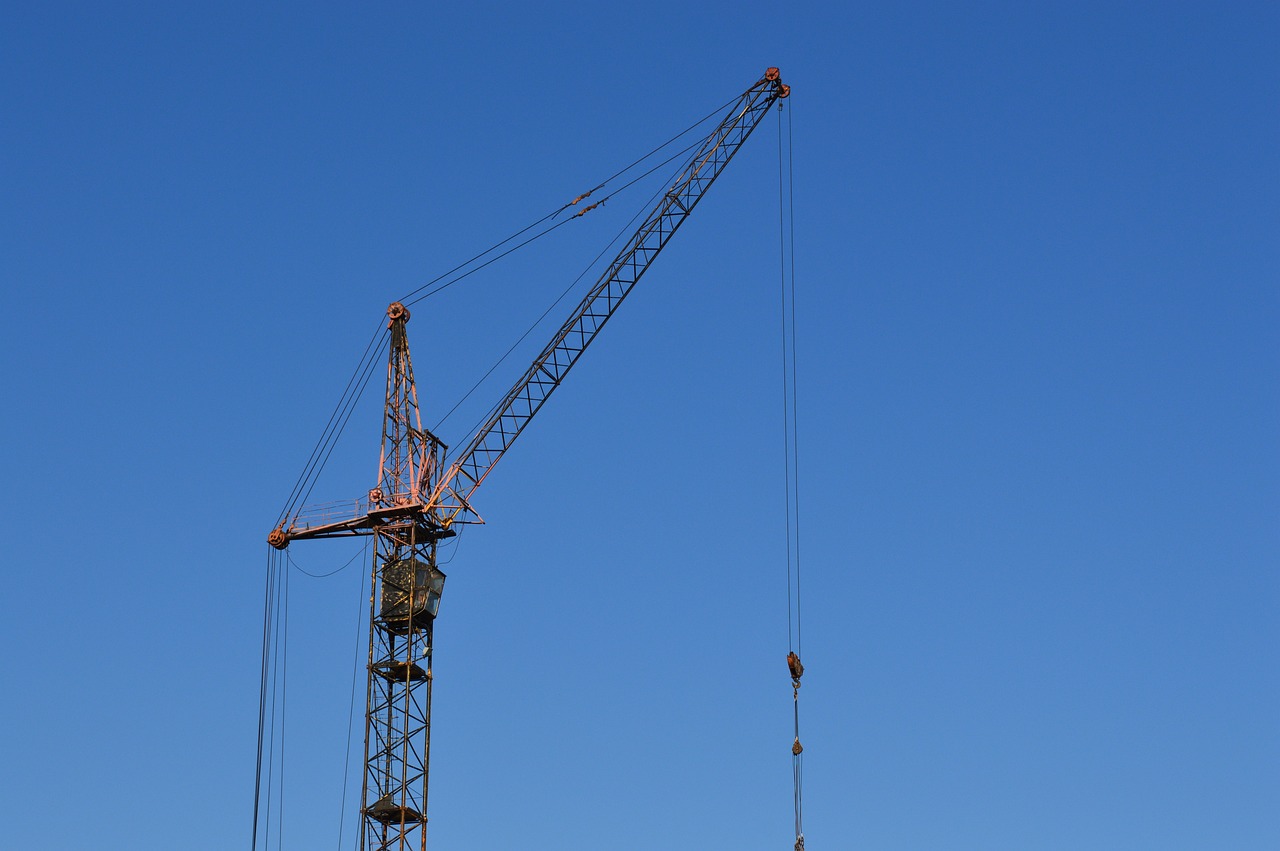
Fastening Methods
When it comes to constructing a tree house, play a pivotal role in ensuring its overall stability and safety. Think of these methods as the backbone of your tree house; they hold everything together and keep it standing strong against the elements. It's essential to choose the right fastening techniques that not only provide strength but also accommodate the natural movement of the tree. Trees sway and grow, and your tree house should be able to adapt to these changes without compromising safety.
One of the most reliable fastening methods is using screws. Unlike nails, which can loosen over time, screws provide a tighter grip and are less likely to pull out. When selecting screws, opt for stainless steel or galvanized options to prevent rust and corrosion, especially since your tree house will be exposed to the elements. Additionally, consider using lag bolts for heavy-duty applications, as they offer superior holding power. They can be particularly useful for securing the main supports of the tree house to the tree itself.
Another method to consider is brackets. These metal pieces can provide extra support and stability to your tree house. By using brackets at key junctions, you can distribute weight evenly and reduce stress on any single point. Make sure to choose brackets that are specifically designed for outdoor use, as they will be more durable against weather conditions.
Incorporating a combination of these fastening methods can significantly enhance the safety of your tree house. For example, you might use screws to attach the floorboards, while employing lag bolts to secure the main support beams. This layered approach not only reinforces the structure but also allows for adjustments as the tree grows. Remember, the goal is to create a safe haven for children to explore and play, so don’t skimp on quality when it comes to fastening materials.
To summarize, here are some key fastening methods to consider for your tree house:
- Screws: Provide a strong and lasting hold.
- Lag Bolts: Ideal for heavy-duty support.
- Brackets: Enhance stability and weight distribution.
By paying attention to fastening methods, you can ensure that your tree house remains a safe and enjoyable place for children. Don’t forget to regularly check the integrity of these fastenings during maintenance to ensure they remain secure over time.
Q1: What type of screws should I use for my tree house?
A1: It's best to use stainless steel or galvanized screws to prevent rust and corrosion. These materials are designed to withstand outdoor conditions.
Q2: How can I ensure my tree house is stable?
A2: Use a combination of screws, lag bolts, and brackets to secure the structure. Make sure to distribute weight evenly and regularly check for any wear and tear.
Q3: Can I build a tree house without damaging the tree?
A3: Yes! Use fastening methods that allow for the natural growth and movement of the tree, such as adjustable brackets and flexible connections.
Q4: How often should I inspect my tree house?
A4: It's advisable to conduct routine inspections at least once a season or after severe weather events to ensure everything remains secure and safe.
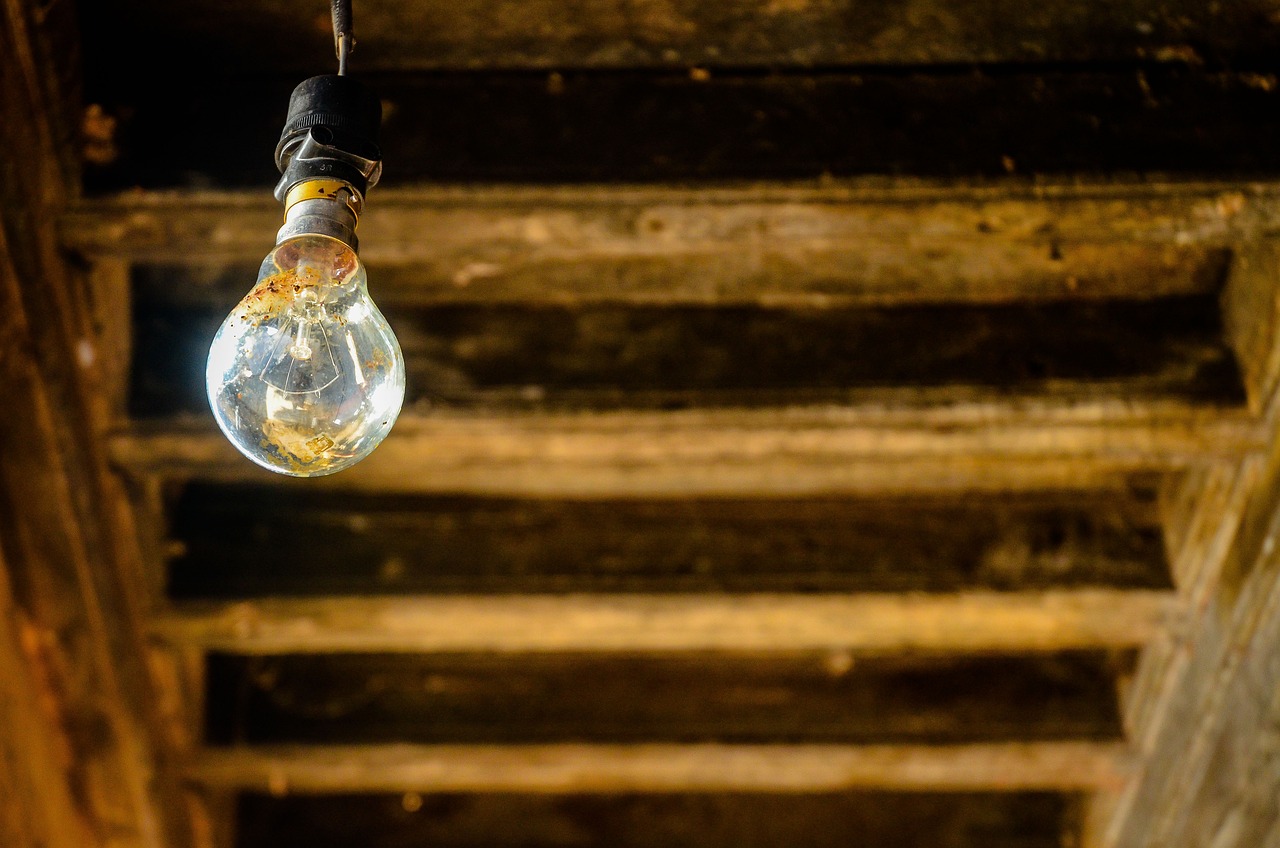
Foundation and Support
When it comes to building a tree house, the system is like the backbone of a human body—without it, everything crumbles. A solid foundation ensures that the tree house can withstand the elements, including wind, rain, and the inevitable roughhousing of excited children. First and foremost, you want to make sure that the tree itself is healthy and robust. A tree with a strong trunk and deep roots will provide the stability needed for your tree house.
One effective approach is to utilize a platform design that distributes weight evenly across the tree's structure. This means that instead of placing all the weight on a few points, you should aim to spread it out over a larger area. This can be achieved by building a platform that is wide enough to accommodate the tree's natural shape and growth. Think of it like a hammock; the more surface area you have, the more comfortable and stable it will be.
Additionally, you should consider the type of supports you use. Here are some options:
- Tree Bolts: These are heavy-duty bolts that attach the tree house securely to the tree. They allow for some movement as the tree grows, which is crucial for maintaining the tree's health.
- Support Beams: Using beams that extend from the tree trunk to the platform can help distribute weight and provide extra stability.
- Brackets and Straps: These can be used to secure the structure further, giving you peace of mind that your tree house will remain standing, even during a storm.
Moreover, it’s important to consider how you anchor the tree house. The anchor points should be placed strategically to allow for the tree’s natural growth and movement. This means avoiding any method that could restrict the tree's ability to expand or sway. Using adjustable brackets can be a great way to ensure that your tree house remains secure while allowing the tree to thrive.
Lastly, don’t forget about the ground beneath the tree. While the tree provides vertical support, the surrounding soil should also be stable enough to handle any lateral forces. If the ground is soft or unstable, it may be wise to consider additional support systems or even a small retaining wall to help keep everything in place.
- What type of tree is best for a tree house? Look for strong, healthy trees like oak, maple, or fir, as they provide the best support.
- How high should I build my tree house? Aim for a height that is safe for children, typically between 6 to 10 feet, depending on the tree and the design.
- How do I ensure the tree house won't damage the tree? Use tree-friendly fastening methods that allow for growth and movement, such as tree bolts and adjustable brackets.
- What maintenance is required for a tree house? Regularly inspect for wear and tear, check the stability of the supports, and ensure that the tree is healthy.

Regular Maintenance
When it comes to tree houses, regular maintenance is not just a good idea; it's a necessity. Think of it as giving your beloved tree house a routine check-up, much like you would for a car or even your health. Over time, elements like rain, wind, and the occasional squirrel can take a toll on the structure, making it essential to keep a close eye on its condition. Regular inspections can help you catch potential issues before they escalate into serious problems, ensuring that your tree house remains a safe haven for adventure and fun.
Start by setting a maintenance schedule. Depending on your local climate, you might want to check the tree house at least twice a year, ideally in the spring and fall. During these inspections, look for signs of wear and tear. Are there any loose boards? Is the roof still intact? Are the railings secure? A quick visual inspection can go a long way in identifying minor issues before they become major headaches.
One of the most critical components to check is the structural integrity of the tree house. This includes examining the tree itself. Is it healthy? Look for any signs of disease or decay, such as cracks in the bark or dead branches. If you notice any concerning changes, it might be time to consult an arborist to assess the tree's health. Remember, the tree is the backbone of your tree house, and its condition directly impacts the safety of your structure.
Next, focus on the materials used in the construction. Over time, wood can warp, splinter, or rot, especially if it’s not treated properly. If you find any damaged areas, consider replacing them promptly to avoid accidents. Using weather-resistant and non-toxic materials is crucial for longevity, so if you find any signs of deterioration, it might be wise to upgrade to better materials. Additionally, check for rusty nails or screws. These can weaken the structure and pose safety risks. Replace any that show signs of wear.
Another key aspect of maintenance is ensuring that the access points are safe and secure. This means checking ladders, stairs, and any other means of getting in and out of the tree house. Are they sturdy? Do they have any loose rungs? Regularly tightening screws and bolts can prevent accidents and ensure that children can safely enter and exit the tree house.
Lastly, don't forget to clean the tree house regularly. Just like any other play area, it can collect debris, leaves, and dirt, which can lead to slippery surfaces or unwanted pests. A simple cleaning routine can keep the space inviting and safe for play. You might even consider adding a fun cleaning day with the kids to make it a family activity!
In summary, regular maintenance is essential for the safety and longevity of your tree house. By conducting routine inspections, addressing issues promptly, and keeping the structure clean, you'll ensure that your tree house remains a cherished and safe place for children to explore their imagination.
- How often should I inspect my tree house? It's recommended to inspect your tree house at least twice a year, ideally in spring and fall.
- What should I look for during inspections? Check for loose boards, signs of rot or decay, the health of the tree, and the condition of access points like ladders and stairs.
- What materials are best for tree house construction? Use weather-resistant and non-toxic materials to ensure durability and safety.
- Can I repair the tree house myself? Many repairs can be DIY projects, but for significant structural issues or tree health concerns, it’s best to consult professionals.
Frequently Asked Questions
- What type of tree is best for building a tree house?
When it comes to selecting the perfect tree, you want to look for strong, healthy trees like oak, maple, or fir. These species provide the stability and durability needed for a safe tree house. Always check the tree’s age and condition—if it’s hollow or has significant damage, it’s probably not the best choice!
- How high should I build my tree house?
The height of your tree house is crucial for safety and accessibility. Generally, it’s best to keep it between 6 to 10 feet off the ground. This height allows for fun without the risk of serious injuries from falls. Plus, it’s easier for kids to climb up and down safely!
- Are safety railings necessary?
Absolutely! Safety railings are a must-have to prevent falls. Make sure the railings are at least 36 inches high and made from sturdy materials. They act as a protective barrier, ensuring that kids can enjoy their time in the tree house without the worry of slipping off.
- What materials should I use for building a tree house?
Opt for weather-resistant and non-toxic materials to ensure durability and safety. Pressure-treated wood is a popular choice, as it withstands the elements well. Avoid materials that could splinter or degrade quickly, as safety should always be your top priority!
- How can I ensure my tree house is stable?
Stability is key! Use proper fastening methods like screws and bolts that are designed for outdoor use. Additionally, make sure the foundation is solid, and the tree house is securely anchored to the tree to withstand wind and movement. Regular checks can help spot any stability issues early on.
- What maintenance does a tree house require?
Routine inspections are vital! Check for any signs of wear and tear, such as loose screws, rotting wood, or rusted fasteners. Regular maintenance not only prolongs the life of the tree house but also keeps it safe for your little adventurers.





